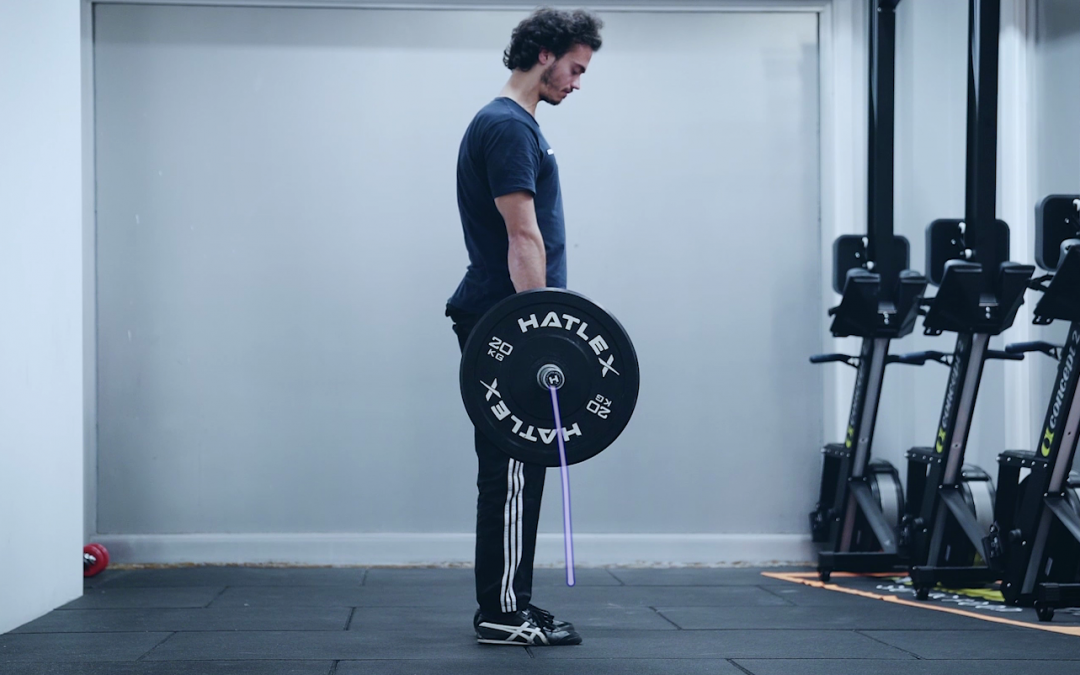The aim of this piece of work is to display the complexity that lays behind strength training; shedding some light on the positive and the negative aspects of its usage in physical preparedness. In fact, within the lack of control in professionals sporting realms, strength training has been too frequently implemented without full awareness and consciousness. Evidence-based training (EBT), jointly with the direct experience on the field, is by the date the most comprehensive ways to enhance the athletes’ growth and progression, in a safe and controlled environment.
Back in 1988, Zatsiorsky defined the physical strength as “the ability of a given muscle or group of muscles to generate muscular force under specific conditions”1. Inside this definition lies the understanding that strength is a specific phenomenon that is not easily transferable from one scenario to another. Humans are able to impress strength in various situations under a specific typology of resistance in a specific time frame and for a certain duration, to producing a specific outcome2. Therefore, talking about “strength training” in general is misleading.
A great example of this concept can be that of a powerlifter who, despite his/her capacity of deadlifting three times his body weight, runs a one hundred meters race extremely slowly.
Moreover, when considering general (GPP) or specific (SPP) physical preparedness for a given sport, strength is just one of the abilities, alongside with “speed, endurance, skill, structure or flexibility”, that an athlete needs to develop 2.
It can be said that all these elements merge with one another in the reality of actions, creating a “biologic continuum” useful to interact with space 3.
Given the complexity of this matter, and the specificity of bodies adaptation, is it worth implementing strength training in someone’s routine?
Strength training has proven to be useful to avoid injuries, increase performance and protect from different diseases. Moreover, it appeared to effectively stress physiological changes, improving both kinetics and kinesthetic qualities 2.
From a brief analysis of the literature, strength training appears to be extremely valuable in various contexts 4,5,6. First of all, physiological and muscular functioning; jointly with a greater responsiveness to training were registered in samples of adults and elderly people7,8. In addition to this, strength training appeared to benefit cerebral palsy patients, specifically in reducing the detrimental effects of their illness on the muscles9,10. Strength training was successfully implemented both for pre-habilitation 11 and rehabilitation 12 purposes. In addition to this, it has been shown to enhance multiple conditional and physiological parameters when accurately added to the training schedule5. As a matter of fact, in less than three months adding ST to the routine elicited substantial adaptations for both “aerobic power” and “short-term endurance” in a male sample13. Similar results were found for healthy, untrained males in another study, where strength training implementation produced relevant outcomes in terms of endurance, following heavy resistance training14.
Moreover, integrating it in endurance programmes, appeared to effectively increase “economy, muscle power and performance” both in trained and untrained individuals15. Neurological and muscular improvements (muscle size and function), leading to a greater coordination of the muscle groups, were registered in samples of prepubescent boys 16 and women 17; however, caution is required.
Besides from all the advantages displayed above, the implementation of strength has some limitations. In fact, if the training adaptations are not adequately adjusted and contextualized, they might elicit states of neuroendocrine system impairing, better known as “overtraining syndromes” 18. Thus, leading to fatigue and decrements in the performance19. This state is normally triggered as a consequence of excessive volume and intensity levels, or when the recovery time between sessions/cycles is not designed correctly 20.
Consequently, in order to achieve satisfying results for what concern an outstanding performance, strength training should always be adjusted to the specific needs and the current state of the athlete, appropriately selecting valuable exercises and training prescription; so that precious time and energies are not wasted 21 and both acute and chronic injuries can be limited22. Expertise in the programming structuration field can surely help better defining the most accurate strength training regime for every athlete 21.
As a matter of this fact, implementing systematic and individualized programming (IP) appeared to be superior to non-individualised ones when the ST addition was aimed at improving the jumping performance for a sample of trained soccer and rugby players23.
Even if less harming as a factor, when talking about athletic performance, it is necessary to consider the needs of the sports. As a matter of this fact, for what concerns shot putters, the rate of force development (RFD) has been shown to be superior in predicting performance rather than maximal force output 24. This implies that training in order to reduce the explosive strength deficit for shot putters would be more beneficial than improving the 1RM.
Conclusions
Given what underlined above, it is clear that strength training can serve as a valuable tool for a great variety of contexts, ranging from the performance enhancement of trained and untrained athletes 14,15 to medical9,10 and rehabilitation 12 applications. It was clearly pointed out that successful outcomes (when it comes to the integration of ST in a programme) were both related to the coach’s determination of the athlete’s needs and his/her ability to structure an individualized training regimen 21. Lastly, the typology of movement context, the sporting scenarios, and the personal long-term goals will dictate which form of strength training should be used to elicit the most effective results 1,2,3.
Reference
1 Zatsiorsky, V. (2005). Biomechanics in sport. Oxford: Blackwell Science.
2 Verkhoshansky, Y., & Siff, M. (2009). Supertraining. Rome, Italy: Verkhoshansky.
3 Ludovic Seifert, Keith Davids. Ecological Dynamics: a theoretical framework for understanding sport performance, physical education and physical activity. CS-DC’15 World e-conference, Sep 2015, Tempe, United States. CS-DC’15 World e-conference.
4 Sale, D. (2008). Neural Adaptation to Strength Training. Strength And Power In Sport, 281-314.
5 Burger, M., & Burger, T. (2002). Neuromuscular and Hormonal Adaptations to Resistance Training. Strength And Conditioning Journal, 24(3), 51-59.
6 O’Connor, P., Herring, M., & Caravalho, A. (2010). Mental Health Benefits of Strength Training in Adults. American Journal Of Lifestyle Medicine, 4(5), 377-396.
7 Tsutsumi, T., Don, B., Zaichkowsky, L., & Delizonna, L. (1997). Physical Fitness and Psychological Benefits of Strength Training in
8 Frontera, W., & Bigard, X. (2002). The benefits of strength training in the elderly. Science & Sports, 17(3), 109-116.
9 Taylor, N., Dodd, K., & Larkin, H. (2004). Adults with cerebral palsy benefit from participating in a strength training programme at a community gymnasium. Disability And Rehabilitation, 26(19), 1128-1134.
10 McBurney, H., Taylor, N., Dodd, K., & Graham, H. (2003). A qualitative analysis of the benefits of strength training for young people with cerebral palsy. Developmental Medicine & Child Neurology, 45(10).
11 Hejna, W., Rosenberg, A., Buturusis, D., & Krieger, A. (1982). The Prevention of Sports Injuries in High School Students Through Strength Training. National Strength Coaches Association Journal, 4(1), 28.
12 Latham, N., & Liu, C. (2010). Strength Training in Older Adults: The Benefits for Osteoarthritis. Clinics In Geriatric Medicine, 26(3), 445-459.
13
14
15 Beattie, K., Kenny, I., Lyons, M., & Carson, B. (2014). The Effect of Strength Training on Performance in Endurance Athletes. Sports Medicine, 44(6), 845-865.
16
17 Häkkinen, K., Kraemer, W., Newton, R., & Alen, M. (2001). Changes in electromyographic activity, muscle fibre and force production characteristics during heavy resistance/power strength training in middle-aged and older men and women. Acta Physiologica Scandinavica, 171(1), 51-62.
18 Halson, S.L., & Jeukendrup, A.E. (2004) Does
19 Fry, A., & Kraemer, W. (1997). Resistance Exercise Overtraining and Overreaching. Sports Medicine, 23(2), 106-129.
20 Fry, R.W., Morton, A.R., & Keast, D. (1991). Overtraining in athletes An update. Sports Med, 12, 32-65
21 Bompa, T., & Haff, G. (2009). Periodization: Theory and Methodology of Training. Champaign. Human Kinetics.
22 Lavallee, M., & Balam, T. (2010). An Overview of Strength Training Injuries. Current Sports Medicine Reports, 9(5), 307-313.
23 Jiménez-Reyes, P., Samozino, P., Brughelli, M., & Morin, J. (2017). Effectiveness of an Individualized Training Based on Force-Velocity Profiling during Jumping. Frontiers In Physiology, 7.
24 Zaras, N., Stasinaki, A., Methenitis, S., Krase, A., Karampatsos, G., & Georgiadis, G. et al. (2016). Rate of Force Development, Muscle Architecture, and Performance in Young Competitive Track and Field Throwers. Journal Of Strength And Conditioning Research, 30(1), 81-92.


Recent Comments